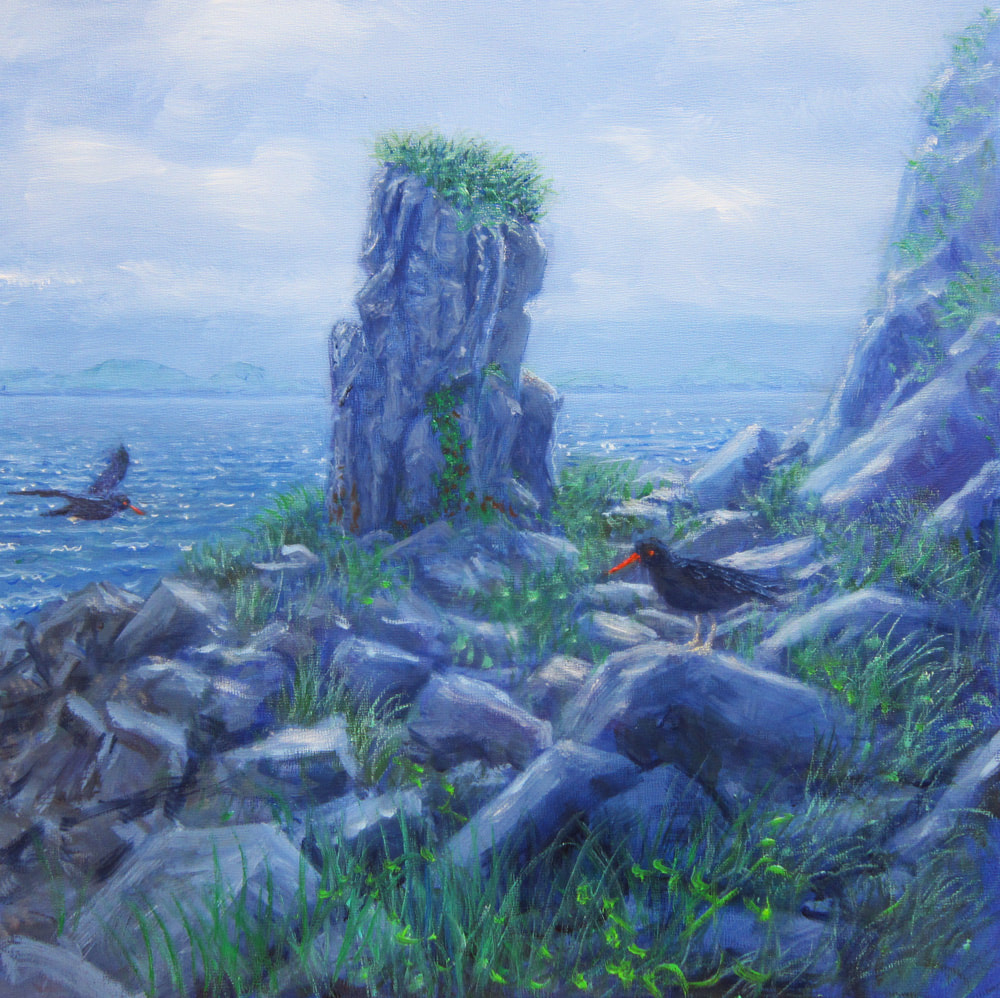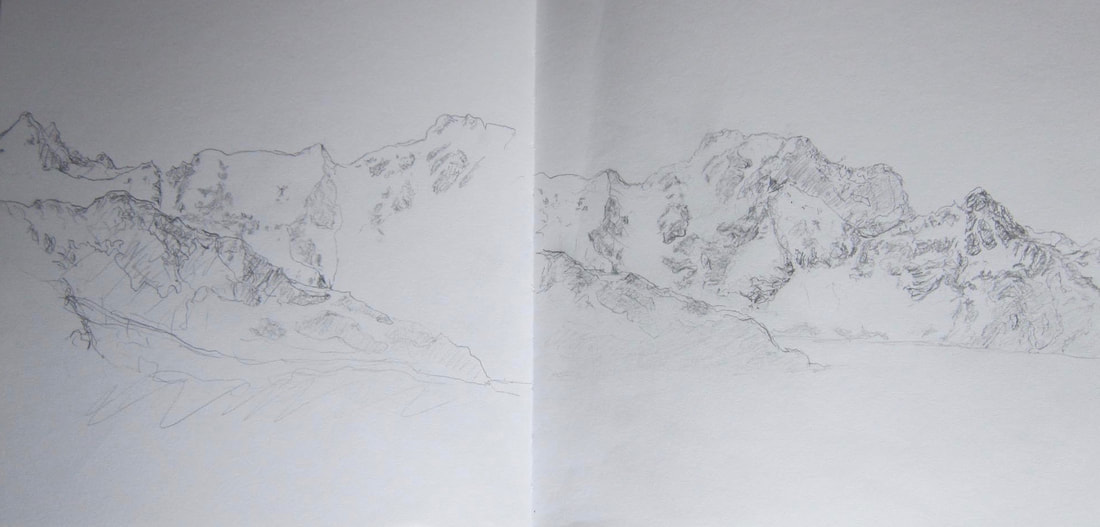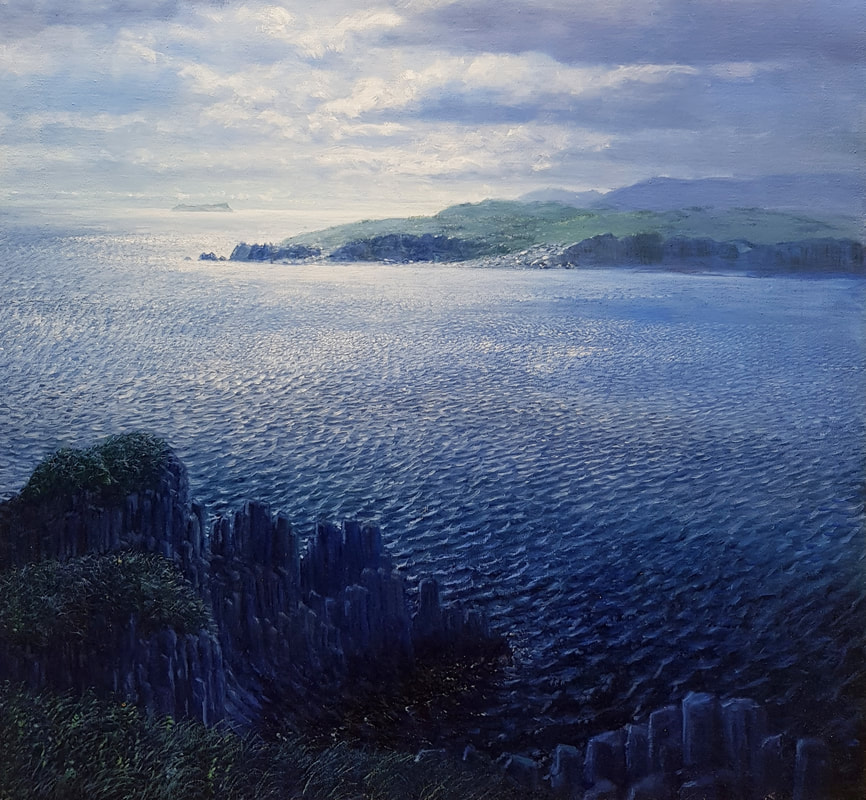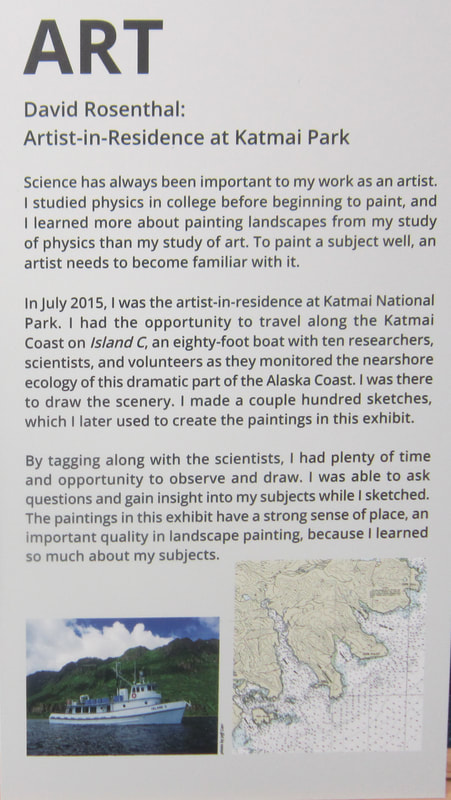This is a shortened version of my catalog it has been created as a companion to the
Art and Science on the Katmai Coast traveling exhibit. If you would like to purchase a full version of the magazine either in print or electronic form you can purchase it by clicking the highlighted text.
Science has always been important to my work as an artist. I studied physics in college before beginning to paint, and learned more about painting landscapes from my study of physics than my study of art. To paint a subject well, and artist needs to become familiar with it.
In July 2015, I was artist-in-residence at Katmai National Park. I had the opportunity to travel along the Katmai Coast onIsland C, an eighty-foot boat with 10 researchers, scientists, and volunteers as they monitored the nearshore ecology of this dramatic part of the Alaska Coast. I was there to draw the scenery. I made a couple hundred sketches, which I later used to create the paintings in this exhibit.
Art and Science on the Katmai Coast traveling exhibit. If you would like to purchase a full version of the magazine either in print or electronic form you can purchase it by clicking the highlighted text.
Science has always been important to my work as an artist. I studied physics in college before beginning to paint, and learned more about painting landscapes from my study of physics than my study of art. To paint a subject well, and artist needs to become familiar with it.
In July 2015, I was artist-in-residence at Katmai National Park. I had the opportunity to travel along the Katmai Coast onIsland C, an eighty-foot boat with 10 researchers, scientists, and volunteers as they monitored the nearshore ecology of this dramatic part of the Alaska Coast. I was there to draw the scenery. I made a couple hundred sketches, which I later used to create the paintings in this exhibit.
SCIENCE
Long-Term Monitoring of Nearshore Marine Resources on the Coast of Katmai Park
The monitoring encompasses major elements of the nearshore trophic web, from primary producers to apex predators, and focuses on six vital signs: kelp and seagrass, marine intertidal invertebrates, marine birds, black oyster catchers, sea otters and marine water chemistry and quality. Dean, Bodkin, Coletti, Protocol Narrative NRR 2014/756
The nearshore can be defined as that section of marine ecosystem that extends from high tideline to depths of about 20 meters. It can be divided into the intertidal zone (between high-water and lower-low water) and the nearshore sub tidal zone (low water to 20 meters in depth). The intertidal shorelines are diverse and vary from sheltered marshlands and beaches to steep rocky outcroppings subjected to high waves. The sub tidal zone is a mix cobble/gravel, rocky outcroppings and sand/silt. Dean, Bodkin, Coletti, Protocol Narrative NRR 2014/756
The scientists I worked with at Katmai National Park are part of Gulf Watch Alaska, a project that provides long-term monitoring of near-shore marine resources in the Gulf of Alaska.
I spent about ten days with them. The scientists chose what they call "the six vital signs" to study, considering the relationship of each to the whole system. When they observed sea otters and Black Oyster catchers, they were not just looking at how these charismatic animals spent their time. They were documenting what they fed on, how plentiful their prey was, and other factors to monitor the overall condition of the ecosystem.




 RSS Feed
RSS Feed